
ABOARD USS THEODORE ROOSEVELT AND USS BUNKER HILL, IN THE PERSIAN GULF – Even as top Navy and congressional leadership in Washington continue to negotiate a path forward for the surface fleet in the aftermath of last year’s two fatal destroyer collisions, some surface leaders are already taking action to ensure their crews are more ready and operating at a higher level of proficiency than the Navy requires.
A U.S. Fleet Forces Command-led Comprehensive Review of Recent Surface Force Incidents and the Navy Secretary-directed Strategic Readiness Review released last year looked at deficiencies in the training and certification of surface forces in the Forward Deployed Naval Force in Japan, with some recommendations touching on the larger surface navy, Navy and joint forces.
Leadership throughout the Theodore Roosevelt Carrier Strike Group are eager to show that those readiness deficiencies found in the FDNF fleet do not apply to their ships. They are developing new ways of promoting greater proficiency among individuals and watch teams and measuring that readiness, and they are hoping the rest of the fleet will take notice and adopt the same best practices.
One item being addressed in the TR Carrier Strike Group is individual proficiency. Onboard cruiser USS Bunker Hill (CG-52), Navigator Lt. j.g. Kevin Donahue told USNI News that he’s tracking each individual sailor and the watches they stand, rather than tracking the watch group as a whole unit.
“That sounds like a very simple thing, but it’s actually a very time-consuming thing to manage,” he said. The crew had been tracking individual sailors’ watches and experience for about two years now and, after Senate Armed Services Committee Chairman Sen. John McCain (R-Ariz.) included the same idea in legislation introduced last month, Bunker Hill is unlikely to back away from maintaining a watch log at the individual sailor level.
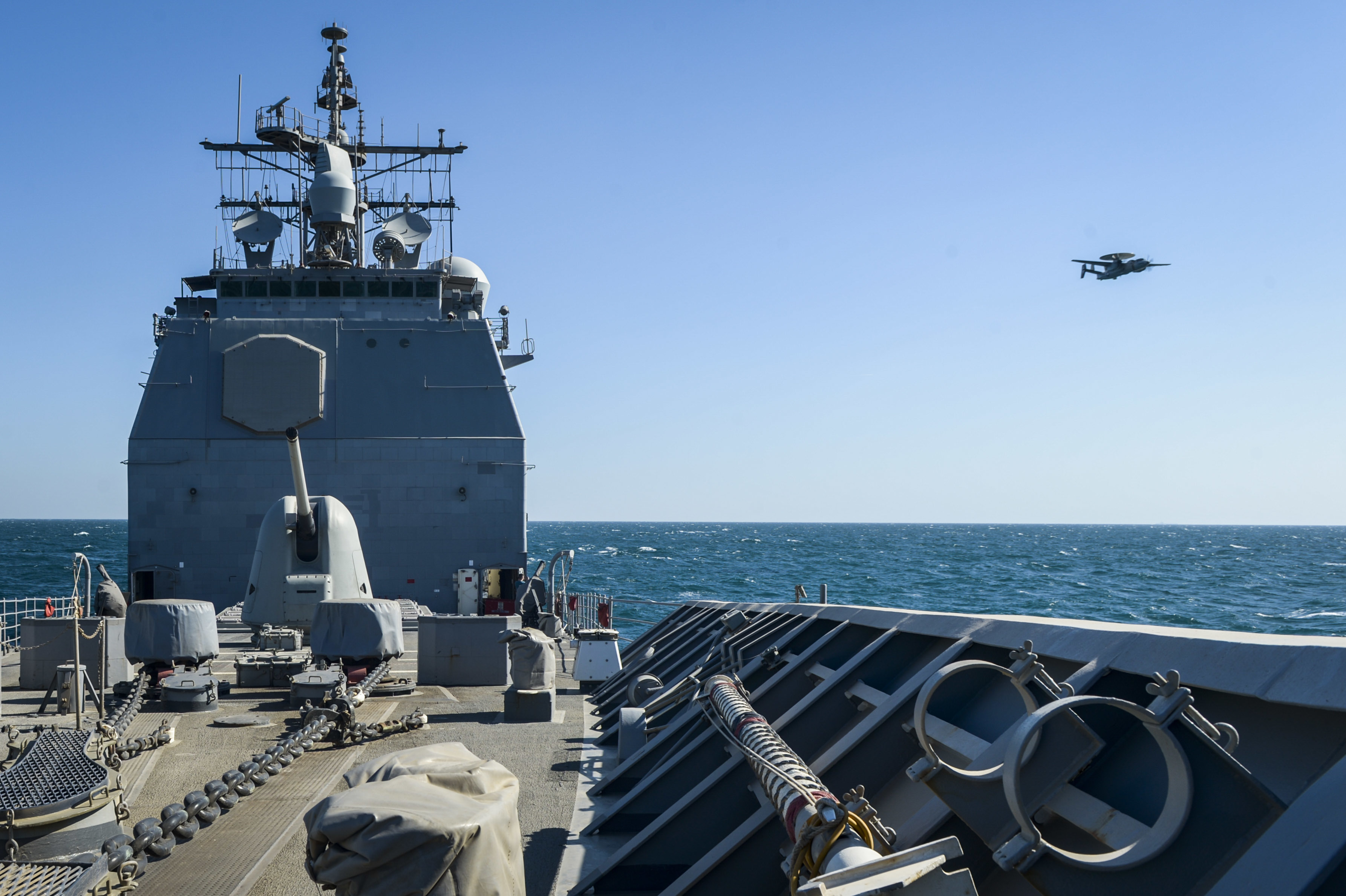
On the carrier, too, watches are being logged and monitored at the individual level, USS Theodore Roosevelt (CVN-71) Commanding Officer Capt. Carlos Sardiello told USNI News, during a three-day trip to visit the strike group operating in the Persian Gulf.
In the aftermath of the Comprehensive Review and the Strategic Readiness Review, the carrier has seen “more formality in the documentation of our training and identifying who has a lot of experience and who doesn’t down to the sailor deckplate level – where before you had qualified teams, now we’re looking at each individual and making sure that they’re getting the reps and sets they need to operate safely as a team. We’re more closely and more formally evaluating our individual watch teams – they’re getting evaluated not just by what the standard is for the fleet internally, and we’re taking that feedback and making sure they’re growing and performing to the (Theodore Roosevelt’s own) expected standard.”
Sardiello said he is holding his crew to a higher standard than the Navy requires because “I would argue the personality and the engagement of a commanding officer, as that goes, the proficiency and the aptitude of the ship follows.”
The mindset of holding the crew to high standards is pervasive throughout the Theodore Roosevelt CSG. Destroyer Squadron 23 Commodore Capt. Bill Daly, too, is pushing for even greater proficiency and readiness within his destroyers and is actively encouraging other DESRONs and Naval Surface Forces to consider doing the same. One way he is doing this is through a Proficiency Assessment Program (PAP) inspection series he created.
Upon departing San Diego in October for the deployment through U.S. 7th Fleet and to U.S. 5th Fleet, Daly said, “I took a team from the DESRON and I went onboard each one of my ships and said, let me see you do all these things. These are important things for me to see you do. Some of them in engineering; I was inspecting some programs, just showing that they are proficient; watching them do [underway replenishments] at sea.”
Daly said the two fatal collisions from last year were on his mind as he conducted these PAP inspections on each destroyer. He said the confidence and the competence of the surface community was undermined to a degree by last year’s fatal destroyer collisions, and “it’s on leaders at this level to demonstrate that we’re also capable of holding ourselves accountable to those standards.”
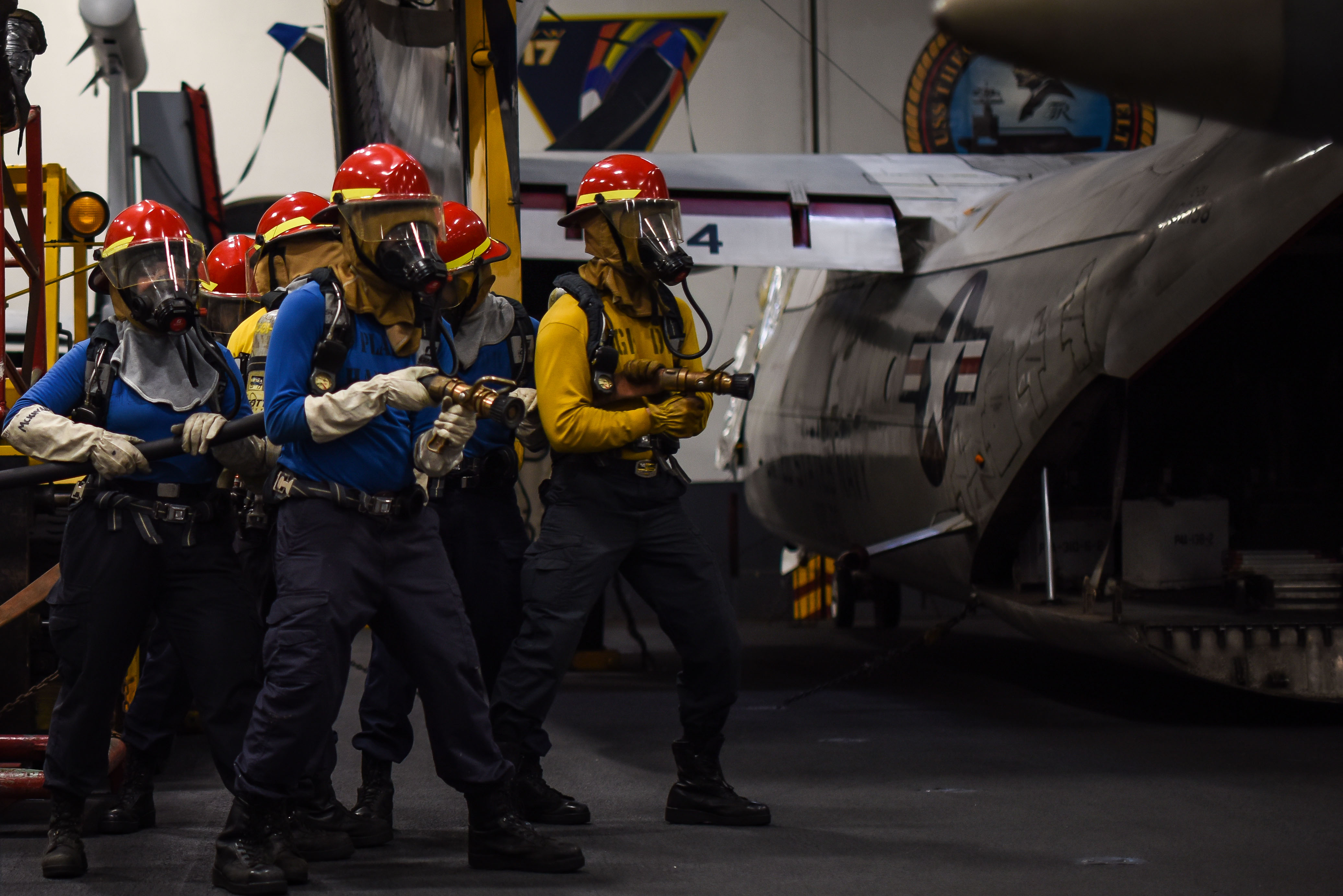
A few weeks ago, as the strike group was wrapping up its operations in 5th Fleet and preparing for the transit home through the Pacific, Daly said he began a second round of PAP inspections.
“As we go home and as they go back into maintenance, I’m giving them the clear message and understanding of their state of proficiency and readiness. Here’s what you’ve got to train on when you’re in the maintenance period, here’s how I assess you right now,” Daly said.
“And then I have provided that to both my operational chain of command and [Surface Force Pacific], both of whom seemed to very much appreciate seeing the [immediate superior in command] taking responsibility.”
Chief of Naval Operations Adm. John Richardson visited the strike group during the deployment, and Daly said he stressed to the CNO that, even though he has enforced a high standard within his own DESRON, “we have to embrace some level of management and standardization in the [surface warfare officer] community. Not view it as a fear, but view it as, all this stuff can be standardized, and it’s a foundation upon which you’re more liberated to think tactically and think about better things. Every DESRON every two years has created all the same stuff the previous guy already did,” Daly said.
“What I’m doing about it is, I created what’s called a DESRON Rosetta Stone. … All I’m doing is trying to push out everything I’ve done, best practices, to all the other DESRONS, and they can take it or leave it. I’m sending it to the type commanders, I’m sending it to the warfare development centers, and we just have to stop spending so much energy birthing the same things that somebody just did.”
Daly’s DESRON Rosetta Stone messages to the rest of the surface warfare community have included how he conducts the Proficiency Assessment Program inspections, how he tracks readiness throughout the deployment, how he conducts his second job as the strike group’s sea combat commander, and how he views the “products, processes and rhythm” items that each DESRON develops on their own but that could be standardized throughout the fleet to save time and effort.
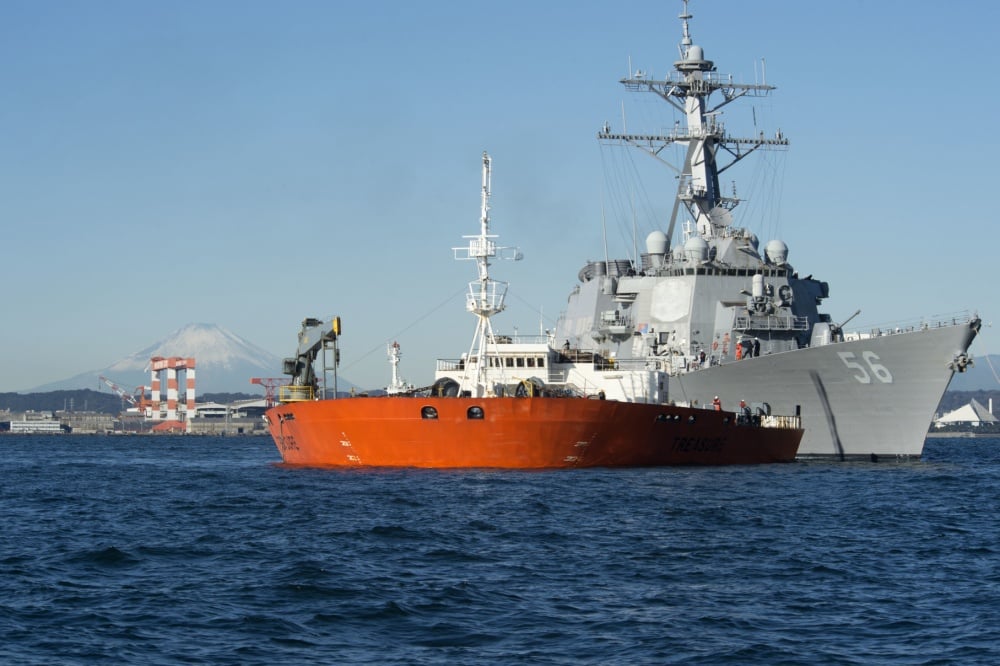
Daly expressed a frustration that last year’s surface collisions – not just the fatal USS Fitzgerald (DDG-62) and USS John S. McCain (DDG-56) collisions, but the non-fatal USS Lake Champlain (CG-57) and USS Antietam (CG-54) incidents as well – painted the surface fleet with too broad a stroke, implying readiness and warfighting deficiencies throughout the fleet.
“I think the rigor at which we hold the ships accountable services their confidence, so they can see how proficient they are doing things at a high standard,” Daly said, explaining why he has chosen to hold his destroyers to such high expectations throughout the deployment.
In addition to the ships and the DESRON developing rigorous standards and measurements to internally assess their readiness and proficiency – and advocating that others adopt those standards too – the strike group has also been forward-leaning on other key takeaways from the two reviews, particularly on circadian rhythm schedules and manning needs.
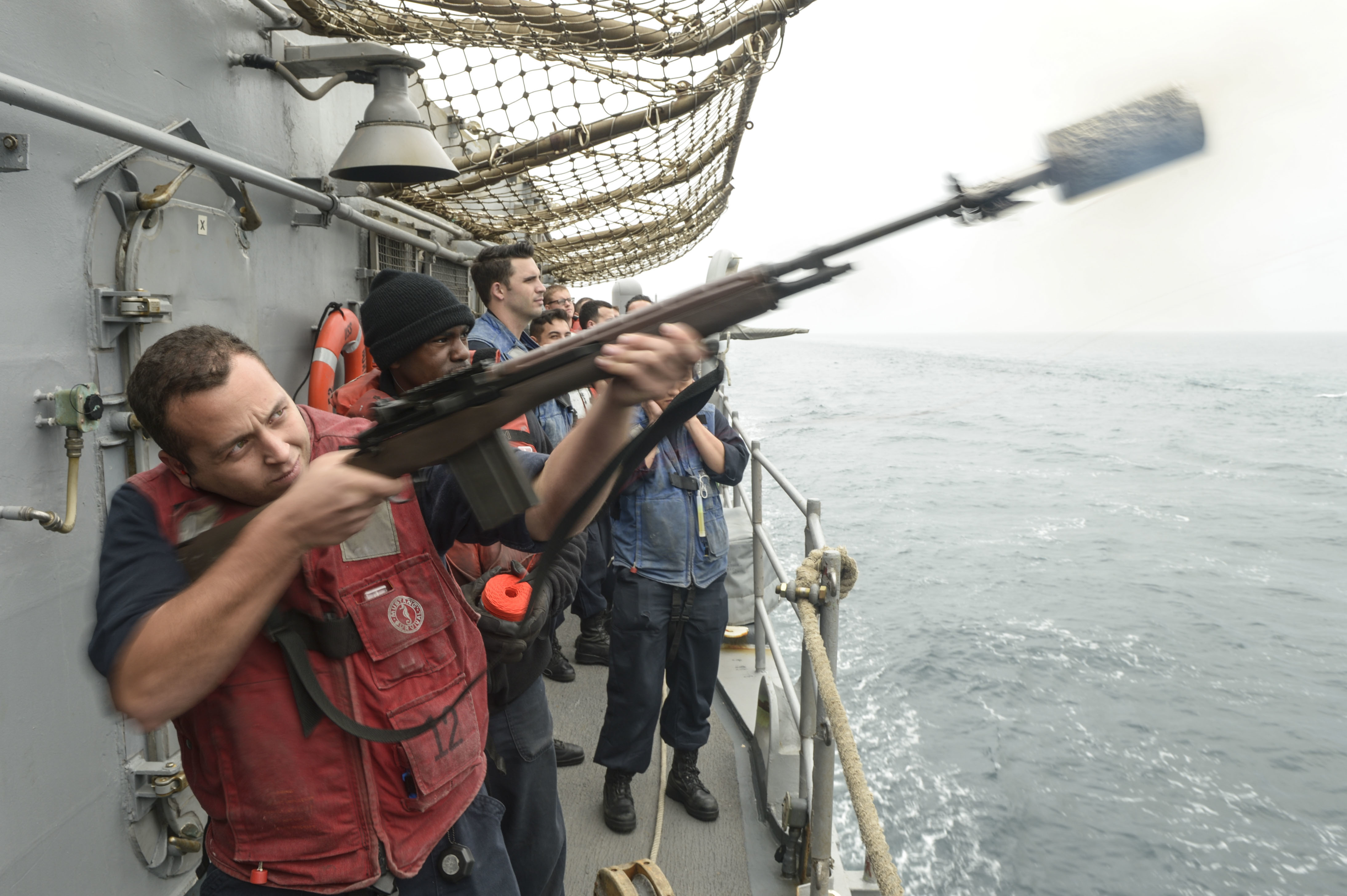
Bunker Hill commanding officer Capt. Joe Cahill started out skeptical of the circadian rhythm concept – where every team stands watch at the same hours every day, instead of a schedule that sometimes has a team on during the day and sometimes at night, forcing individuals to sleep at random hours throughout the day – but is now a big proponent of it and has implemented that watch schedule since taking command of the cruiser two years ago.
“I was always dismissive of that because I was a good SWO, I could go three days without any sleep. But I can’t do that anymore. I notice now that I’m older that I can’t do that anymore, and I notice my own mental piece – and these guys notice it too – I get cranky, I will be shorter with them, and I don’t connect the dots as well and as quickly as if I’m rested,” he said.
Donahue, the Bunker Hill navigator, spoke highly of the schedule, both in how it affects an individual physiologically and in how it affects his ability to train new watchstanders.
“It’s a science-based approach to watchstanding, and the fact of the matter is you are more alert and you’re more reliable as a watchstander, whether you can tell or not, when you have had the same periods for sleep allotted to you every day. It’s how bodies are designed to work. I think the main challenge it presents for commands is … it takes a more creative and diligent watch bill and day planning. The [executive officer] has fewer hours allotted to him for meetings and boards and all that, but it’s something any team can work around,” he said.
As for training, “having a circadian watch bill where everyone stands the same hours of watch every day allows you to say, okay, well this hour’s watch is a little lighter, or the captain’s always awake, we’re focused, so we can put someone who’s newly qualified on then. And then as they get more experienced put them on later and later.”
Even though the comprehensive review and strategic readiness review looked at some surface combatant-specific issues, Sardiello said his carrier has embraced these changes as well, developing a greater number of qualified watch teams so that each watch is a shorter duration. The ship now has five section watches for the nuclear propulsion plant instead of three, for example, which means “shorter watches, more alert, more time for other things including rest,” he said.
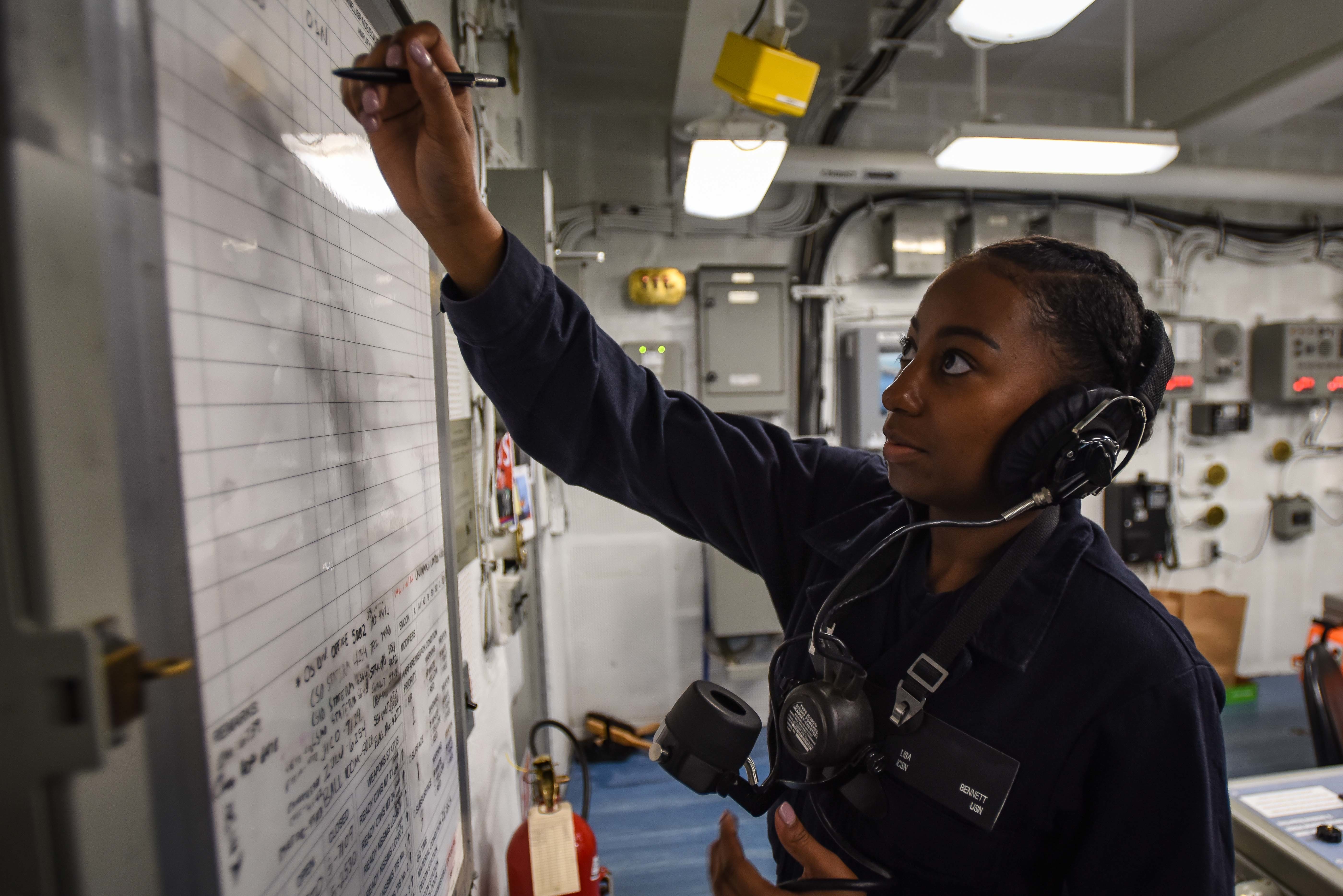
Cahill said that, for this to become a lasting change, it has to be embraced from the top and as a grassroots effort. He said he believes the grassroots movement is taking hold among ship crews in the fleet, and so far he’s pleased with what he’s seen from surface navy leadership.
“What the community is doing right now is looking at, what are the resources and the manning changes that have to occur in order to standardize this and make it not just a groundswell execution but make it more deliberate,” the skipper said, which may mean paying for more sailors per ship.
“I think in this case we have a moment in time where the policy has an opportunity to impact the budget and the resources, and I think in this case we’ll have better warships, we’ll have crews that are operating at a higher level of competency … capability, capacity, and then the results you can deliver as a teammate or a team, and I think it will get better over time” if the Navy earnestly follows through with the two reports’ embrace of a circadian watch schedule.
The Navy has yet to make large-scale manning changes as a result of the two reports, but Daly, the DESRON commander, said the Navy’s Fiscal Year 2019 budget request would invest in additional personnel at the DESRON level, primarily to help with unit readiness.
“This is a small staff. The DESRON has more responsibility than it is equipped to handle” between its two primary roles of maintaining readiness throughout the squadron and serving as the sea combat commander for the strike group.
“There’s a long-standing legacy of commodores sort of cutting and pasting, borrowing people” to meet those requirements, but a manpower plus-up in the FY 2019 request would give the staff “at least seven new people, which is huge. Two officers and five enlisted.”
Daly said those personnel will be mostly chief petty officers added on the readiness side of the dual-hatted staff, to “support my ability to hold my ships accountable, train them, assess them, keep them on the right track,” but he hopes the final configuration will support his warfighting role too.
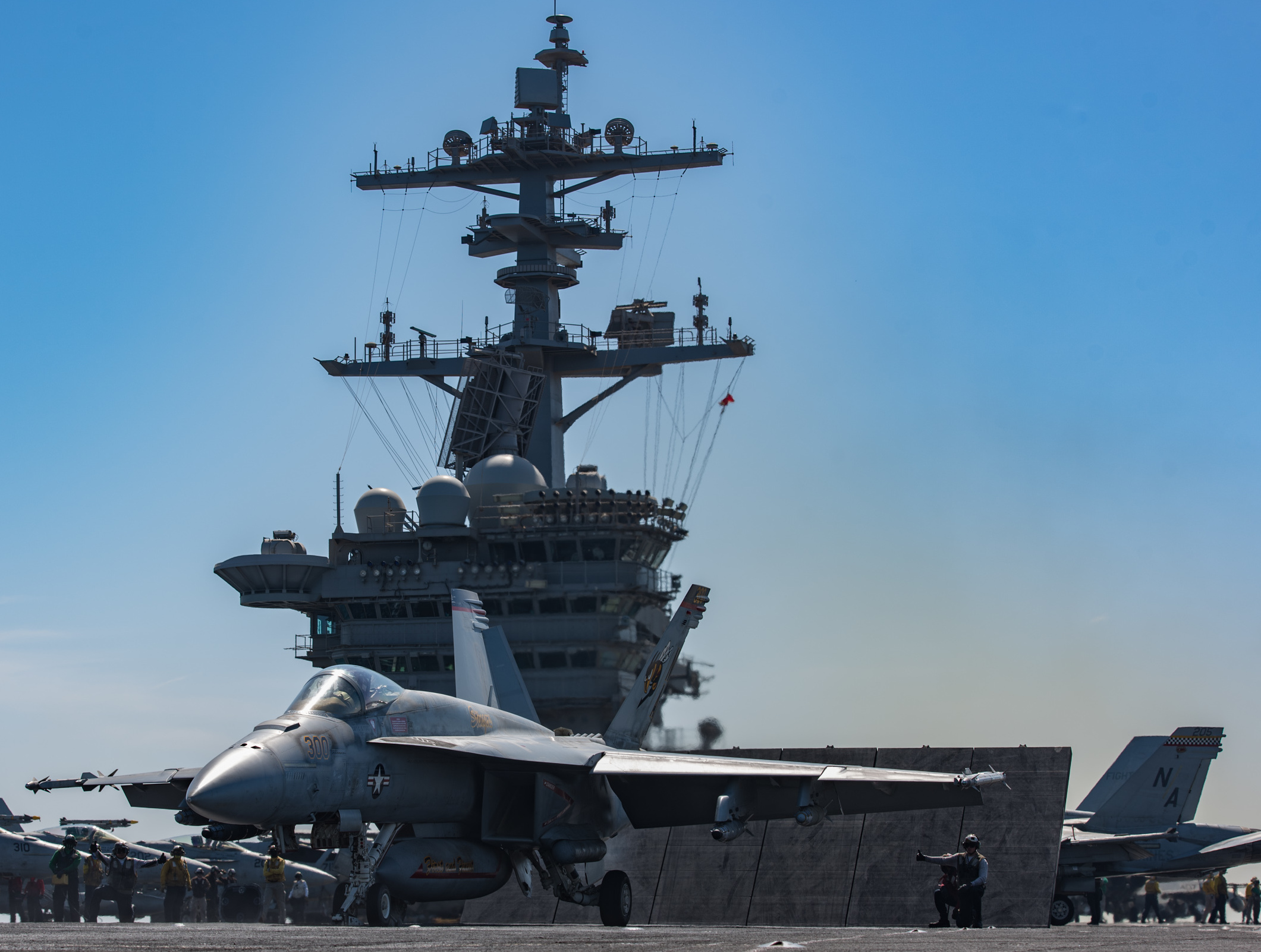
“Don’t just man me for readiness; you need to man me for sea combat, the tactical side as well. So that’s a really concrete example of everybody waking up to the fact that, if we want to continue to be improving and get really good at sea combat then you have to resource the guy who’s at least most acutely responsible at the tactical level,” he said.
Though this one strike group leaning forward, implementing best practices ahead of requirement and holding themselves to higher standards will not change the fleet, the leadership is certainly pushing for their practices to be adopted by following deployed carrier strike groups and by the Navy as a whole.
“For me, what the CR and SRR are going to do is, we will standardize how individual warships are doing what we’re describing for you today,” Cahill said.
“In my mind, warships are doing this, and the standardization that we’re embarking on as a community is important, it’s valuable, and I think it will provide long-term benefits.”





